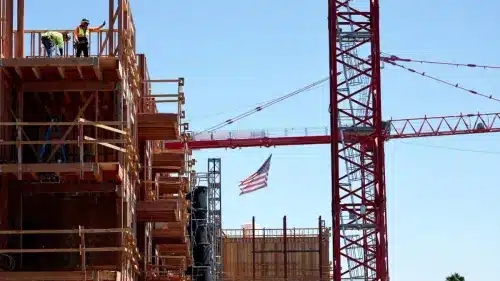The construction industry is on the brink of a transformative era in 2025. With rapid technological advancements, increased emphasis on sustainability, and innovative project management techniques, staying informed about these changes is crucial for industry professionals. In this article, we explore the top 10 construction trends that are set to reshape the way we build, manage projects, and ensure safety on the worksite.
1. Green and Sustainable Construction
Sustainability is no longer a buzzword—it’s a necessity. In 2025, eco-friendly practices and sustainable materials are becoming integral to new construction projects. Key points include:
- Eco-friendly Materials: Increased use of recycled and renewable resources.
- Energy Efficiency: Integration of renewable energy sources like solar panels and wind turbines.
- LEED Certification: More projects aiming for green building certifications to meet regulatory and market demands.
This trend not only helps in reducing the carbon footprint but also enhances the long-term value of properties.
2. Advanced Technology and Automation
Automation and digital technology are revolutionizing the construction process. The integration of these technologies offers numerous benefits:
- Robotics & Drones: Automated equipment for tasks like surveying and material handling.
- Artificial Intelligence: AI-driven project management systems that optimize schedules and resource allocation.
- Machine Learning: Predictive maintenance and quality control through data analytics.
Adopting these technologies can lead to improved efficiency, reduced labor costs, and enhanced safety.
3. Evolution of Building Information Modeling (BIM)
BIM continues to evolve as a critical tool in the construction industry. In 2025, BIM is not just a 3D model but a dynamic, collaborative platform:
- Real-Time Collaboration: Cloud-based BIM systems allow multiple stakeholders to work simultaneously.
- Augmented and Virtual Reality (AR/VR): Enhanced visualization for design reviews and training.
- Data-Driven Decision Making: Integration of BIM with IoT sensors for real-time project monitoring.
By streamlining communication and coordination, BIM minimizes errors and reduces rework.
4. Modular and Off-Site Construction
Modular construction is gaining momentum due to its efficiency and cost-effectiveness. Off-site fabrication offers several advantages:
- Reduced Construction Time: Modules are built in parallel with site preparation.
- Enhanced Quality Control: Factory settings ensure consistent quality and precision.
- Lower Environmental Impact: Less waste and reduced onsite disruptions.
This trend is particularly appealing for large-scale projects where time and budget constraints are critical.
5. 3D Printing in Construction
3D printing is transitioning from experimental projects to mainstream construction applications. Its benefits include:
- Customization: Ability to create complex, bespoke designs with minimal waste.
- Speed: Rapid prototyping and construction of components.
- Cost Efficiency: Reduced labor and material costs through automated production processes.
As 3D printing technology matures, we can expect to see more printed structures and components in commercial and residential projects.
6. Smart and Connected Construction Sites
The Internet of Things (IoT) is making construction sites smarter and safer. Key developments include:
- Real-Time Monitoring: Sensors track equipment usage, material conditions, and worker safety.
- Data Analytics: Insights from connected devices help in predictive maintenance and efficient resource management.
- Enhanced Communication: Integrated platforms improve coordination among site teams.
By leveraging IoT, construction managers can optimize operations and mitigate risks effectively.
Read also Top 10 Most Profitable Construction Projects for Investors in 2025
7. Enhanced Safety and Risk Management
Worker safety remains a top priority in the construction industry. In 2025, innovative safety measures are taking center stage:
- Wearable Technology: Devices that monitor vital signs and environmental hazards.
- Smart PPE: Helmets and vests equipped with sensors to detect unsafe conditions.
- Advanced Training Programs: Virtual reality simulations to prepare workers for potential hazards.
These advancements not only protect workers but also contribute to higher overall project efficiency and reduced downtime.
8. Energy-Efficient Infrastructure
The push for energy-efficient buildings is stronger than ever. Future projects are focusing on:
- Smart Energy Management: Automated systems that optimize energy consumption.
- Integration of Renewable Technologies: Use of solar, wind, and geothermal energy systems.
- High-Performance Materials: Insulation and glazing innovations that reduce energy loss.
Energy-efficient infrastructure not only supports sustainability goals but also offers significant cost savings in the long term.
9. Digital Twin Technology
Digital twins are virtual replicas of physical assets that help in planning, monitoring, and maintaining construction projects. This technology offers:
- Simulation Capabilities: Testing designs and processes virtually before actual implementation.
- Real-Time Data Integration: Continuous monitoring of performance and maintenance needs.
- Lifecycle Management: Better insights into asset management and operational efficiency.
Digital twin technology is transforming project management by enabling data-driven decisions and proactive maintenance.
10. Workforce Training and Skill Development
As construction evolves, so must the workforce. In 2025, training and skill development are critical:
- Digital Skills Training: Programs focused on BIM, IoT, and other advanced technologies.
- Safety Protocols: Enhanced training modules to address new safety challenges.
- Continuous Learning: Emphasis on upskilling and reskilling to keep pace with technological advancements.
Investing in workforce development ensures that the industry remains agile and capable of meeting future challenges.
The construction landscape in 2025 is set to be defined by innovation, sustainability, and technology-driven solutions. From green building practices to the adoption of digital twin technology, each trend offers opportunities to improve efficiency, safety, and cost-effectiveness in construction projects. By staying ahead of these trends, professionals can not only enhance their competitive edge but also contribute to a more sustainable and technologically advanced future.
Read also Top 10 Largest Construction Companies in Europe 2025
